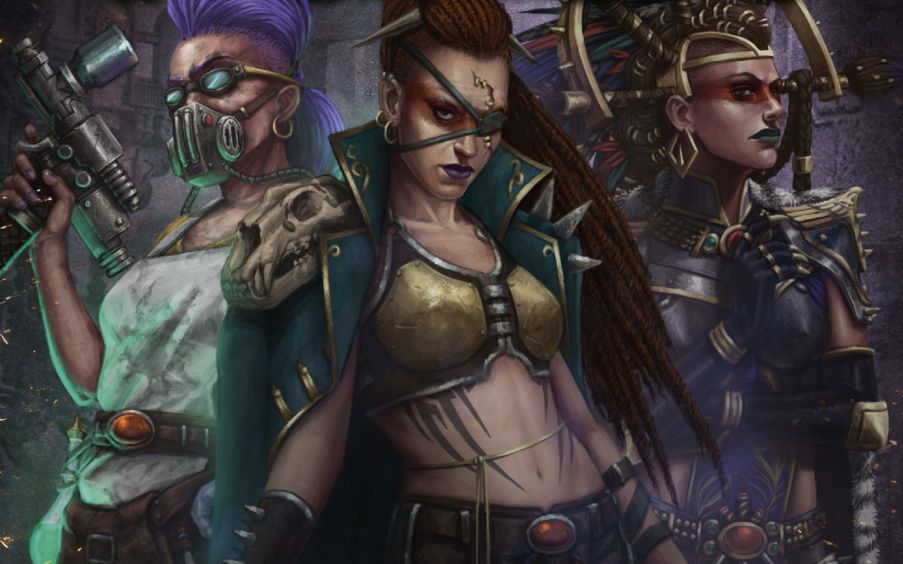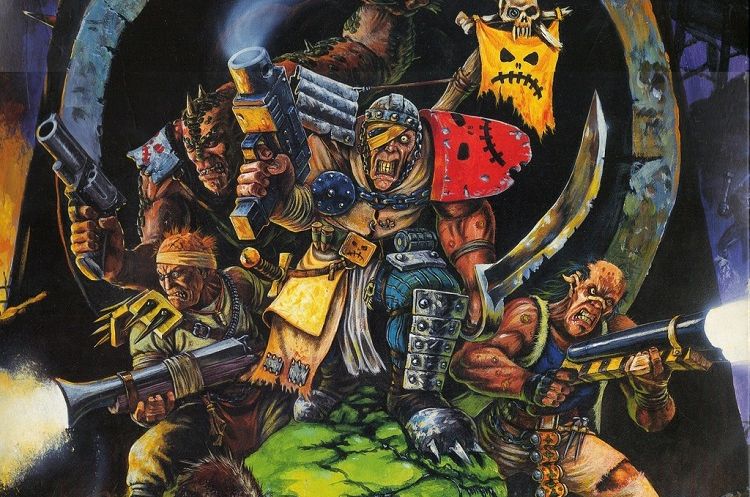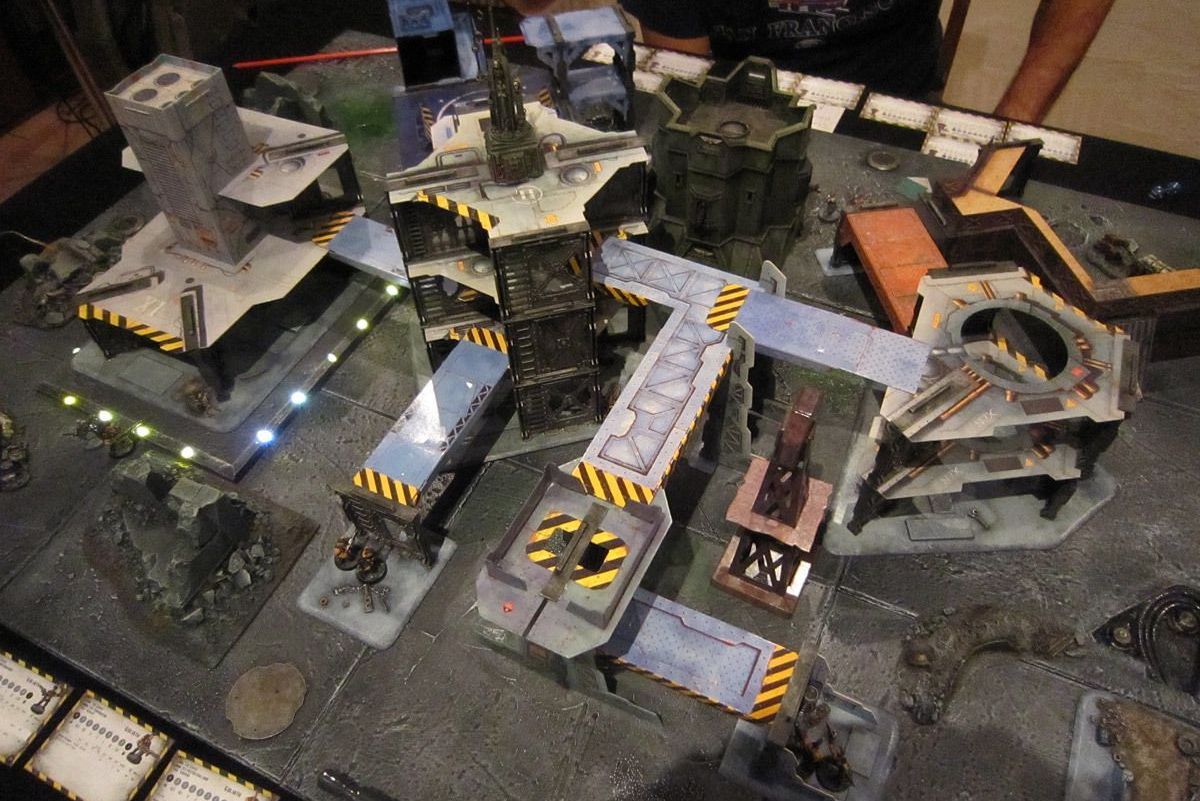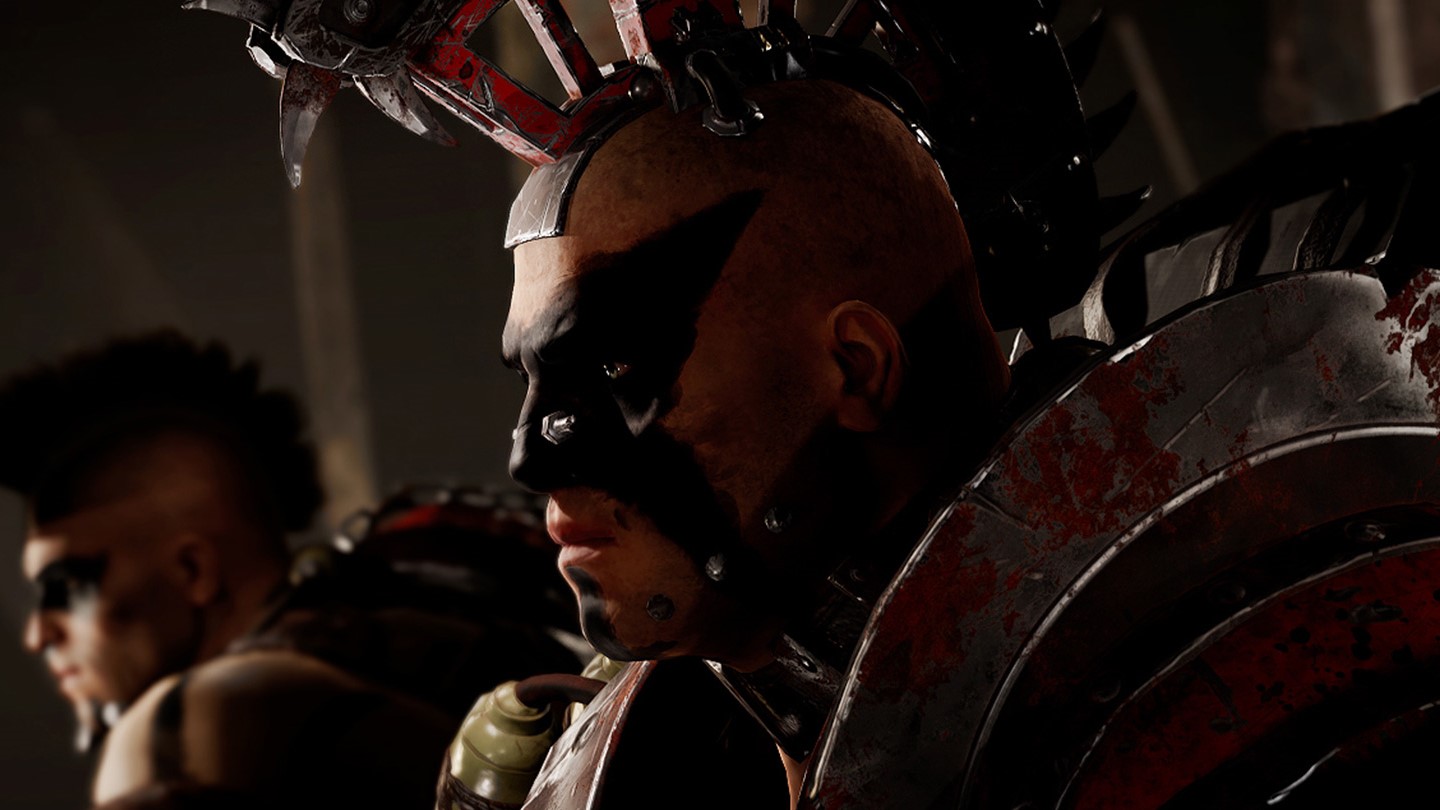Why Necromunda is a big deal
And not just another drop in the Warhammer 40,000 flood.

A turn-based strategy game where you zip your squad into cover and set them up on overwatch, with a campaign structure that lets your rookies grow and learn new skills—or suffer long-term injuries—as you play.
That description sounds like XCOM, but it's also how I'd describe Necromunda, a tabletop game in the Warhammer 40,000 universe first published by Games Workshop in 1995. With its short matches and shoot-outs between colorful mohawked punks, bikers, and men who look like JC Denton from Deus Ex, Necromunda's always felt like a videogame. It seems like every time a 40K game is announced, someone asks when it'll be Necromunda's turn to be adapted. The answer, finally, is now: Rogue Factor's Necromunda: Underhive Wars is due out on September 8.
But there's more to Necromunda's appeal than videogame-iness. It's also a rare 40K game that depicts the setting from the bottom up. It's set beneath a city with a population of billions, where gangs fight over scrap and scavenging rights in the filth. 40K is a vulture of a setting that rips bleeding chunks of inspiration out of existing sci-fi like Aliens and Dune, and while other games play up the big space war side of things, Necromunda is about the basal grit, borrowing most heavily from cyberpunk, Judge Dredd, and The Warriors.

A wretched hive
The planet Necromunda is an industrial powerhouse that churns out weapons for the Imperium's endless wars until pollution reduces it to ash wastes and sludge seas. Most of the population live in hive cities, each a gigantic tower with roots in the strata and heights above the toxic clouds. The factories on the lower levels pump out so much waste that eventually it overwhelms them, at which point they're abandoned and buried, and the next layer of mid-level hab zones is converted to factories while the elite of the Spire build upwards even further to keep their distance from the squalor. A map of Necromunda's capital, Hive Primus, is just a picture of the class system.
The other thing Necromunda provides for the war effort is people. Billions live in each hive, struggling to survive in a toxin-rich environment where feudal Houses fight proxy wars by arming gangs to do battle in the Underhive. The toughest of those gangers make perfect fodder for military regiments, some even becoming neophytes of the Imperial Fists marine chapter. It's not in the interests of the Imperium to stop all this violence and suffering, because it's a convenient way of filling the levies with people who already know how to hold a laspistol. If every day of your life is a fight for survival, you don't have to spend much time at the academy before you're ready to fight orks.
Sci-fi tends to contrast humans against aliens as a way of saying something about us. We might be the species who is most ambitious and tech-savvy, or the most savage and war-like. In 40K we're the most utilitarian. We expand so far and in such numbers we end up with a society that doesn't care about individual lives.
One of the cheerful thoughts for the day the Imperium prints on its stationery says, "The universe is a big place and, whatever happens, you will not be missed…" Necromunda is an illustration of that dystopian idea.
The biggest gaming news, reviews and hardware deals
Keep up to date with the most important stories and the best deals, as picked by the PC Gamer team.

Gangarang
When Necromunda was published the Warhammer 40,00 miniatures game was in its second edition, which was a more skirmish-level ruleset. Necromunda adapted those rules, reducing the number of troops down even further. It let you see these characters, doomed human grist for the hive city mill, up close. There may be billions more just like them, but these dozen or so cogs in the machine are my cogs in the machine.
That scale made it perfect for campaign play where each miniature had their own skills and gear, and changed as a result of your wins and losses (and some dice rolls between matches). Your youngest juves could become badass gangers, or survive death to come back with scars. The most recent edition of Necromunda has changed things, but it's still got campaign play complete with experience points and advancements, promotions and lasting injuries. The more you play the more you see the stories of your gangers unfold, getting attached to them like your XCOM squaddies.
If you were really into customizing miniatures you could chop and change them to represent that evolution, but videogames have the edge here. I'd rather give one of my gangers a cybernetic arm with a click of the mouse than a conversion job with Stanley knife and glue, and for that matter I'd rather pick a color scheme from a menu than ever have to paint another lump of plastic.
Rogue Factor's Necromunda: Underhive Wars will feature gangs of up to 15 members, each customized. Only five can be sent on a mission at once, apparently because missions can involve up to four gangs competing over the same territory. Though I'm all for a low headcount if it means each ganger feels unique, I hope it doesn't have a similar problem to Rogue Factor's previous Games Workshop adaptation, Mordheim: City of the Damned. A game of squad-level tactics in the Warhammer Fantasy universe, it only pitted you against warbands of exactly the same size, making fights predictable. In Necromunda, where clans of mutant scavvies armed with sticks might try to swarm a well-equipped gang with guns straight from House Orlock's manufactories, being outnumbered but not outgunned is part of the appeal.
Something the new videogame definitely seems to be keeping from Mordheim is its movement system, which gives you an over-the-shoulder view of each character and lets you WASD them around until they hit the outer limit of their movement radius. It suits multilayered levels you want to look up at as well as down on—perfect for the Underhive—but it also needs a good map so you're not confused by the jumble of ruins, and Mordheim's was a mess. Fortunately a glimpse of Necromunda's map screen from the trailer suggests it'll have more clarity.

Ground level
When 40K games let us play someone who isn't a space marine, it's usually still someone in a position of power, like an Inquisitor or admiral or high-ranking tech-priest. Necromunda is about relatively ordinary folk—tough as nails ordinary folk, because this is a Warhammer game after all—and that's an angle on the setting we don't often see.
Hivers breathe recycled air, drink recycled water, and eat a mix of algae, fungus, something called "slime cobs," and corpse-starch, which is recycled hivers. They illustrate the 40K idea that in a galactic empire life is cheap on a scale that's hard to imagine. It may seem like responding to that by styling up your mohawk and joining a gang is crazy, but as another of the Imperium's thoughts for the day says, "In an hour of Darkness a blind man is the best guide. In an age of Insanity look to the madman to show the way."

Jody's first computer was a Commodore 64, so he remembers having to use a code wheel to play Pool of Radiance. A former music journalist who interviewed everyone from Giorgio Moroder to Trent Reznor, Jody also co-hosted Australia's first radio show about videogames, Zed Games. He's written for Rock Paper Shotgun, The Big Issue, GamesRadar, Zam, Glixel, Five Out of Ten Magazine, and Playboy.com, whose cheques with the bunny logo made for fun conversations at the bank. Jody's first article for PC Gamer was about the audio of Alien Isolation, published in 2015, and since then he's written about why Silent Hill belongs on PC, why Recettear: An Item Shop's Tale is the best fantasy shopkeeper tycoon game, and how weird Lost Ark can get. Jody edited PC Gamer Indie from 2017 to 2018, and he eventually lived up to his promise to play every Warhammer videogame.

